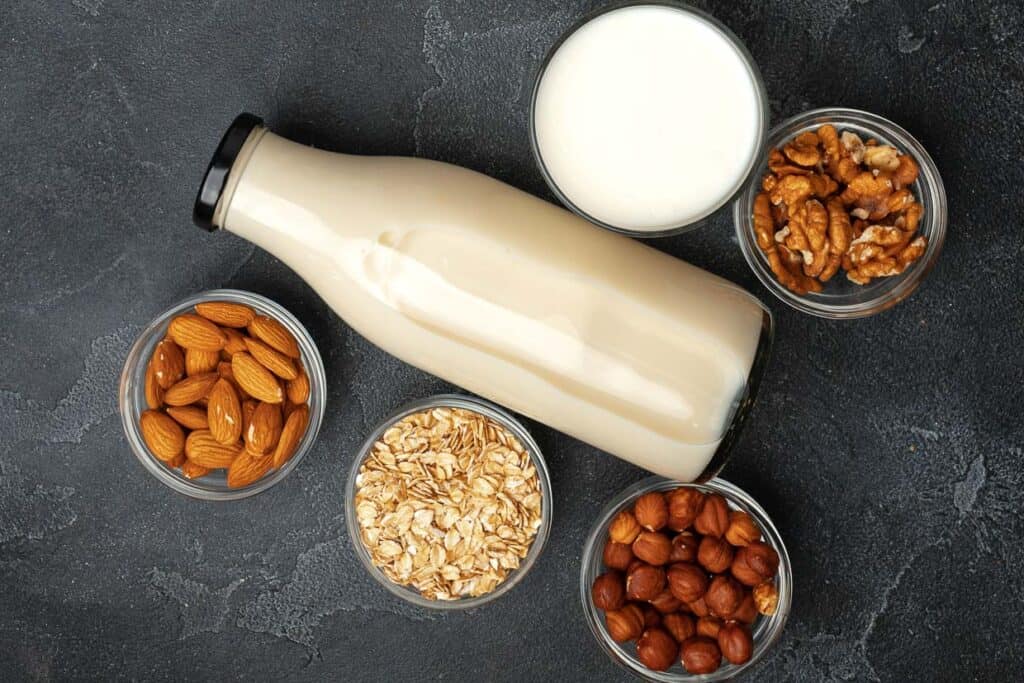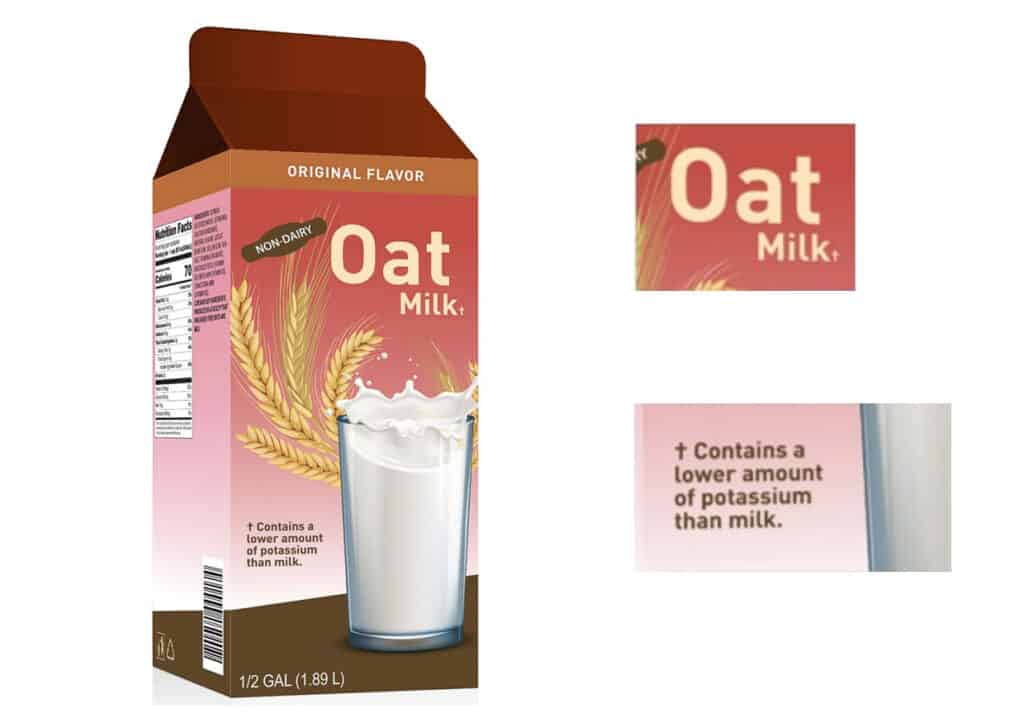Is almond milk actually milk? What about oat milk? Should a drink only be called milk if it comes from a cow or other animal? That’s what the FDA has been trying to decide for years.

On February 23, the U.S. Food and Drug Administration released its draft guidance for “Labeling of Plant-Based Milk Alternatives and Voluntary Nutrient Statements.
Over the past decade, plant-based alternatives to cow’s milk have been gaining popularity.
In 2010, one-fifth of U.S. households purchased milk alternatives, and by 2020 retail sales rose to nearly $2.4 million. However, there is currently no FDA-required label standardization for the alternative milk industry.
“Ensuring plant-based milk alternative labels are clear will help enable consumers to quickly ascertain the attributes of products they are purchasing for themselves and their families,” the FDA guidance reads.
While the new guidance would allow plant-based products to include milk on their labeling, the decision isn’t quite final.
The public has the opportunity to submit their comments to the draft guidance, which the FDA says it will consider before finalizing the industry standards.
History of Milk Labeling
One of the FDA’s primary responsibilities is to ensure that foods in the United States are “safe, wholesome, and properly labeled.”
In 1973, the FDA initially standardized milk as “the lacteal secretion, practically free from colostrum, obtained by the complete milking of one or more healthy cows.”
As such, any product that included milk on its label was supposed to conform to that definition.
Currently, no such label standardization exists for plant-based milk alternatives, which has left that industry in limbo.
Some have questioned if plant-based milk should be referred to as “imitation milk.”
The term imitation is used in labeling to refer to food that is nutritionally inferior to the food it is imitating.
In its draft guidance, the FDA said it intends to exercise its enforcement discretion with respect to the FD&C Act, which was enacted by Congress in 1938 to protect consumers from the uninformed purchase of an inferior substitute product.
The FDA sought public comment in 2018, and after receiving more than 13,000 comments determined that when purchasing plant-based milk alternatives, consumers are doing so intentionally and therefore their decisions are informative.
The primary concern of respondents was that consumers may be unaware that plant-based milk alternatives contain lower amounts of nutrients than cow’s milk.
How Dictionaries Define Milk
Long before the FDA decision, Merriam-Webster updated its definition of milk to include “a food product produced from seeds or fruit that resembles and is used similarly to cow’s milk.”
They cite examples such as almond milk, coconut milk, oat milk, and soy milk and reference that the term almond milk was used back in 1526 in The Grete Herball, a historic encyclopedia.
Dictionary.com goes a step further and defines milk as “a whitish, potable liquid made of ground nuts, legumes, seeds, or grain blended with water and often a sweetener, used especially as a substitute for dairy milk, its main ingredients as specified: nut milks; Almond milk; oat milk; rice milk.”
If we head across the pond to the UK, the Collins Dictionary even includes milklike pharmaceutical preparations, such as milk of magnesia in its definition. This type of milk is a laxative made up of magnesium hydroxide.
What the Draft FDA Guidance Says
Per the FDA’s draft guidance, plant-based milk alternatives will be allowed to include milk on their labels; however, they are not required to. They can also refer to the product as a beverage or drink.
If the word milk is included on the packaging, it must include a qualifier that the milk is derived from plants.
The FDA says the term “plant-based milk” is too vague and instead recommends using a descriptor of the legume, nut, grain, seed, or other plant source, such as soy milk.
“The nature or source of the characterizing or predominant ingredients is important information for consumers and should be included in the name or statement of identity to identify and describe the food and distinguish it from similar foods,” the guidance reads.
Additionally, if the product is made using a blend of plant sources, that also needs to be included on the label.
Although not required, the FDA says using truthful statements like “dairy-free” and “non-dairy” will help inform consumers, but those statements, if used, must be included in conjunction with the plant source.
How Plant-Based Nutrient Labels May Change
Throughout this process, the dairy cattle industry has argued that consumers are being misled. They are concerned that if a plant-based product is able to call itself milk, consumers will believe the product carries the same nutritional value as its dairy counterpart.
The FDA acknowledged this presumption existed upon reviewing the thousands of public comments on the topic.
To account for this discrepancy and to ensure consumers are well informed when making buying decisions, the FDA guidance recommends that plant-based milk alternatives include a nutrition statement on the labeling, such as, “Contains lower amounts of [nutrient name(s)] than milk.”
Additionally, the FDA recommends including a nutrient listing label similar to the guidelines used by dairy producers.

“Today’s FDA announcement is a step toward labeling integrity for consumers of dairy products, even as it falls short of ending the decades-old problem of misleading plant-based labeling using dairy terminology,” the National Milk Producers Federation said in a statement.
“By acknowledging both the utter lack of nutritional standards prevalent in plant-based beverages and the confusion over the nutritional value that’s prevailed in the marketplace because of the unlawful use of dairy terms, FDA’s proposed guidance today will provide greater transparency that’s sorely needed for consumers to make informed choices,” the statement continued.
In the current guidance, these labeling requirements are all voluntary and only apply to milk alternatives, not to other plant-based dairy alternatives, such as cheese or yogurt.
The Milk Producers Federation said that the voluntary guidance is “meaningless without action” and that enforcement will be necessary. They plan to continue working with Congress to direct the FDA to enforce its rules.
How To Submit Comments on the Draft Guidance
Before the labeling guidance is finalized, the FDA is seeking additional public comments. If you would like to express your opinions, you can contact the FDA by April 24, 2023.
Comments may be submitted electronically or via mail. More information can be found in the Federal Registry Announcement.
Related Articles
If you’re interested in other plant-based alternatives, check out these 10 cool facts on how the stevia plant can change your life.
For those who prefer to enjoy a full vegetarian diet beyond milk alternatives, you’ll love our 7 tasty first date ideas for vegetarian foodies.